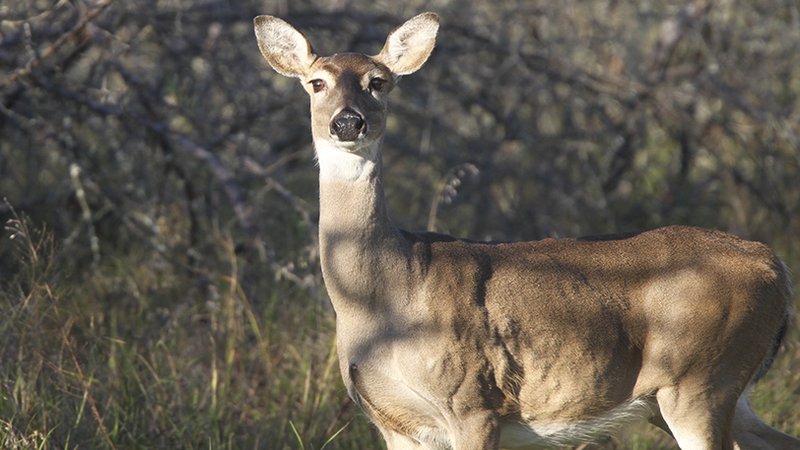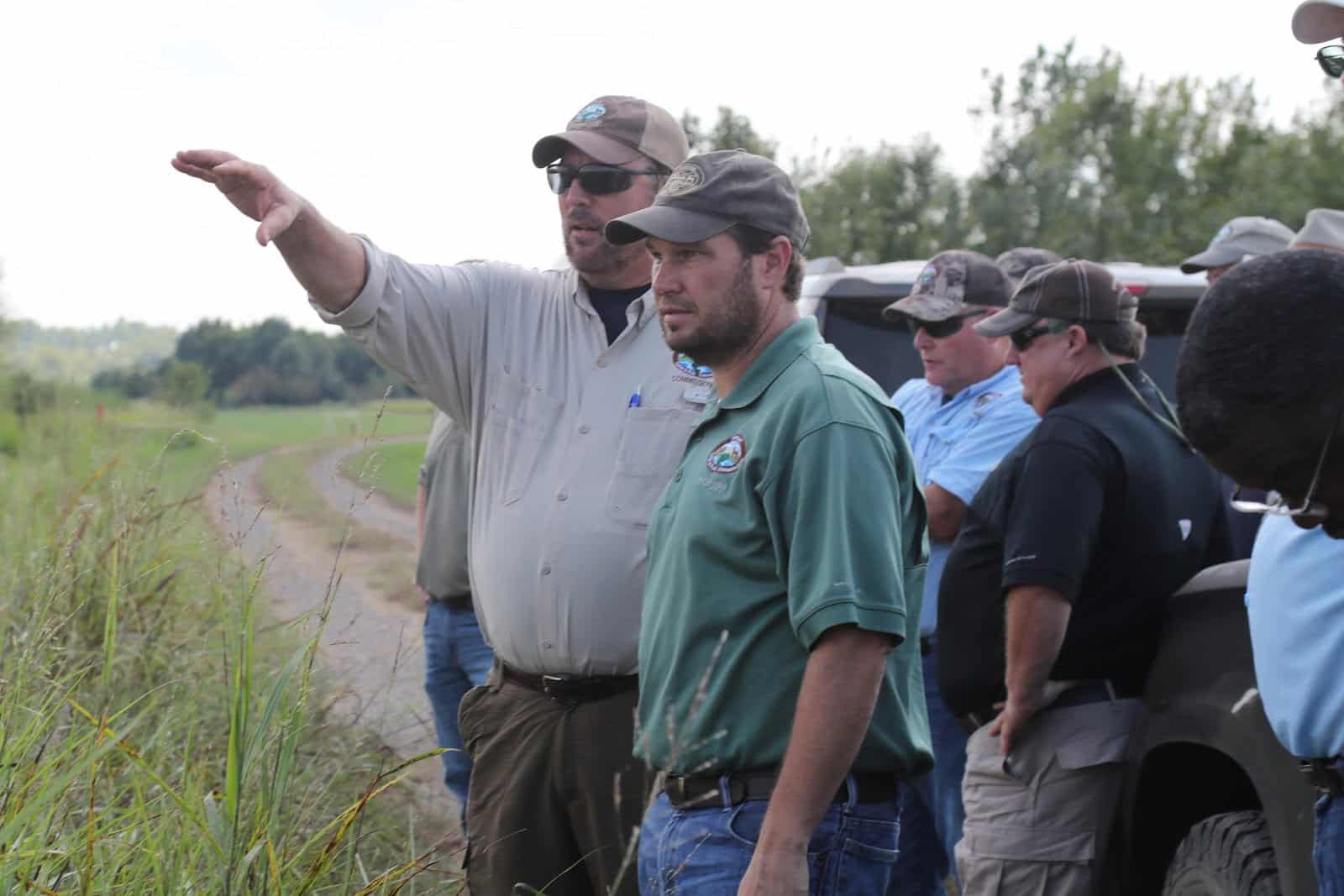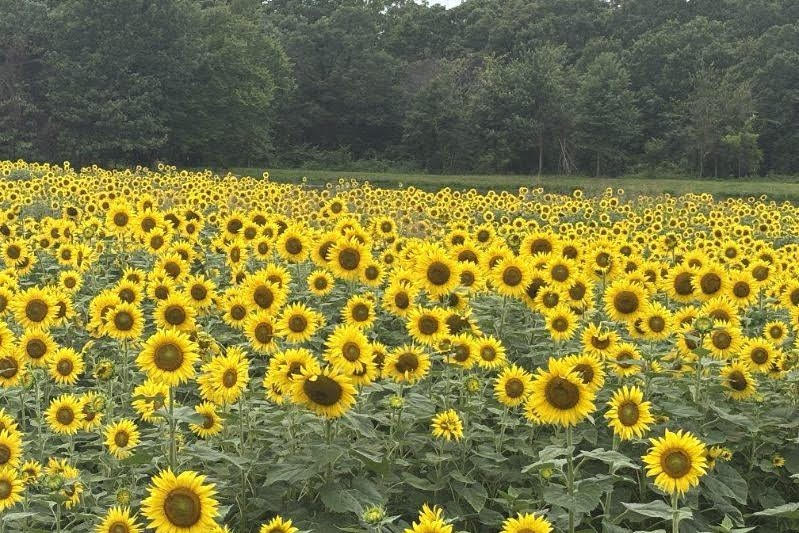Antlerless hunt offers head start to deer season
ON 10-10-2017

Oct. 10, 2017
Randy Zellers
Assistant Chief of Communications
With shorter days and football season in full swing, many Arkansas hunters are starting to get the itch to enjoy a quiet morning in the woods, waiting on a deer to show at their favorite hunting spot. Hunters who can’t stand the wait until modern gun season opens have a great opportunity to get out and get some meat in the freezer during Arkansas’s private land antlerless deer hunt, which runs from Oct. 14-18.
During the hunt, only antlerless deer may be harvested with a modern gun on private land. Hunters interested in hunting for a buck may still bowhunt, but must wear hunter orange. In the past, some hunters elected to bring both a rifle and bow to the stand, with the idea that they would hunt for does, but if a buck walked out within range they would still have an opportunity to take it with the bow. This year a regulation was passed restricting hunters to choose one or the other, however.
During the regulations cycle, Brad Carner, chief of wildlife management for the AGFC explained that there was concern that hunters bringing both weapons to the stand would have additional temptation to harvest a buck with their firearm and claim it was shot with a bow if checked.
“The spirit of these added days of modern gun season is to harvest does and help balance the deer herd,” Carner said. “If they want to bowhunt, I encourage them to do that. If they want to participate in the antlerless hunt, that’s also great. We’re just asking people to choose which one they’re going to do that morning and carry one or the other.”
Hunters have had mixed feelings about the five-day hunt since it first was added to the season a few years ago. Some hunters rooted in tradition still believe the additional harvest of does can hurt the deer herd, but Ralph Meeker, AGFC deer program coordinator, says the deer herd has changed greatly since the days of “buck only” harvest, and changes must be made to ensure balance.
“In the 1940s and 1950s, the focus was on protecting does because the goal was to bring back populations from near extinction,” Meeker said. “In good habitat conditions, deer can repopulate very quickly, and by the 1980s, deer managers saw the need to begin stabilizing the population to best balance the herd with the habitat available.”
Meeker explains that when a deer herd has too many does, as it does in some sections of the state, it prolongs the rut, and that isn’t good for the herd or the hunt.
“If the rut lasts too long, you have many does bred late and many fawns dropped later in the summer,” Meeker said. “The vegetation will not be in prime condition and the fawns will have a lower survival rate.”
Meeker says a shorter rut also means bucks will be more actively chasing the does that are available. In this scenario hunters have a better chance of harvesting an older age-class buck because of increased breeding competition.
The early positioning of the antlerless hunt also draws some criticisms from hunters who dislike the disturbance before muzzleloader season and youth hunting seasons, but Meeker says biologists have a few reasons to place the hunt early in the season.
“We want to try and remove some of that doe segment early, before rutting behavior really begins, in an effort to shorten and intensify the rut,” Meeker said. “We also are hoping fewer button bucks are harvested, as many still will be small and close to the adult doe. Hunters should be able to tell the size difference between the fawns and adults and let the fawns walk.”
Meeker says the hunt is allowed only on private lands because most private land does not receive as much pressure as public land. “We set harvest goals by deer management zones, but that doesn’t mean every part of that zone can withstand the same amount of harvest or hunting pressure,” Meeker said. Some locations within that same deer zone may be very unbalanced and need the extra harvest to help balance their herd. We want to give them an opportunity to make that happen.”
Meeker adds that many hunters still pass on the extra opportunity.
“According to last year’s harvest numbers, hunters took 5,300 does statewide during those five days,” Meeker said. “That’s about 6 percent of our overall yearly doe harvest. A lot of hunters still aren’t thinking about dragging a deer out of the woods until it’s a little colder, or at least until they’re done buck hunting.”
As time goes on, Meeker says hunters may see additional changes to the antlerless only hunt, and may even see it removed if conditions call for it.
“Habitat and deer populations are very fluid,” Meeker said. “Sometimes you have to apply a little more pressure to the accelerator and other times you need to let off. Managing the deer harvest through season lengths and bag limits are two of the best tools we have to achieve the right balance of herd health and hunting opportunity.”
Recent News

Former Chairman Neeley ‘got back more than I gave’
Jul. 28, 2025
Subscribe to Our Weekly Newsletter E-mails
Don’t miss another issue. Sign up now to receive the AGFC Wildlife Weekly Newsletter in your mailbox every Wednesday afternoon (Waterfowl Reports are published weekly during waterfowl season and periodically outside the season). Fishing Reports arrive on Thursdays. Fill in the following fields and hit submit. Thanks, and welcome!

